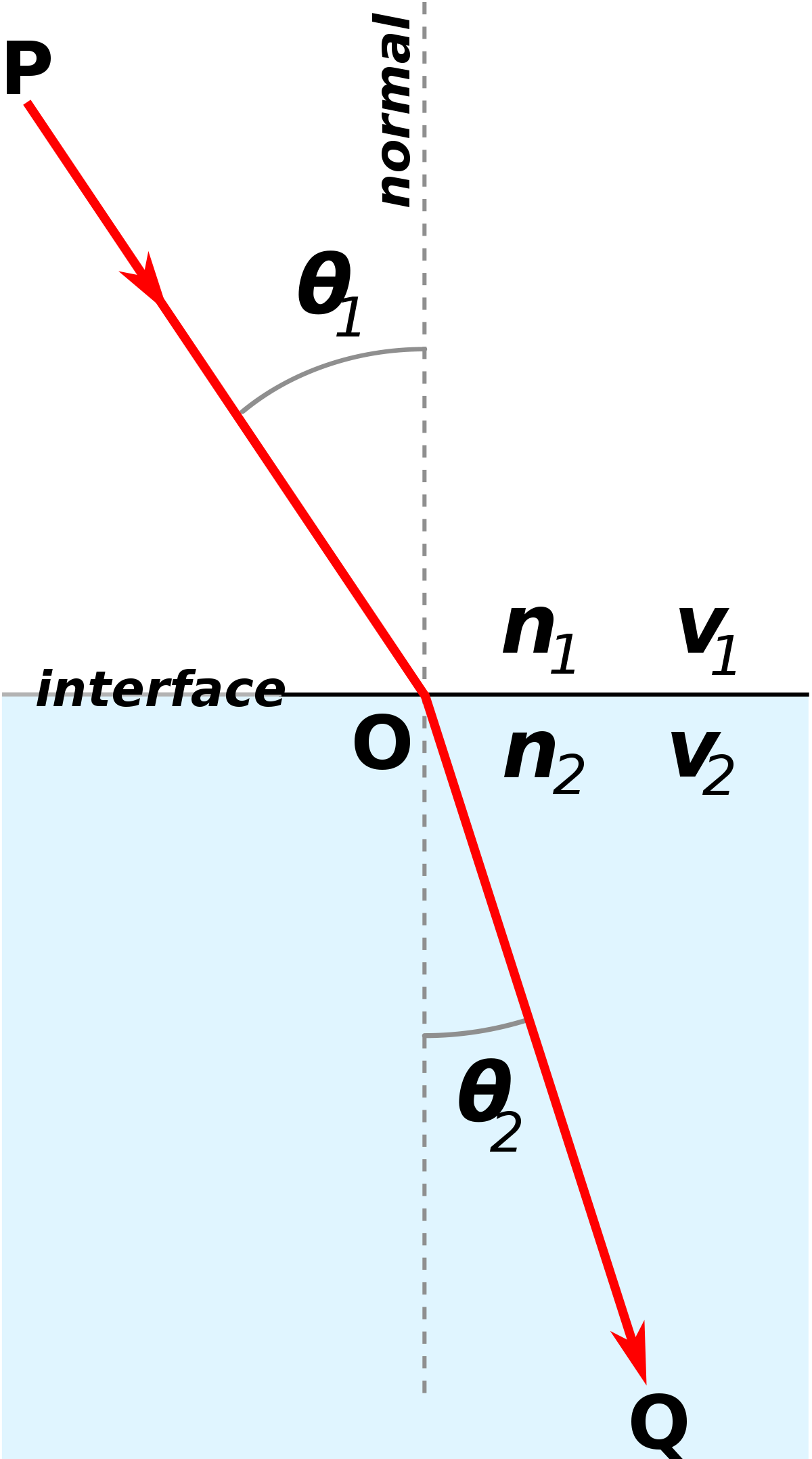Question #12750
1 Answer
One simple answer is conservation of momentum.
Explanation:
This is not something I've really ever questioned - kudos for asking!
There are several ways to answer this question. We could look at the solution to the wave equation that comes out of Maxwell's Equations, but I suppose the simplest explanation is conservation of momentum. Although the particles of light, called photons, are massless, they do carry momentum. The magnitude of the momentum of a photon is given by:
where
A notable exception to this is refraction wherein light changes direction in a predicable way a the boundary between two dissimilar materials:

This change in direction is because of the interaction of the light with the electrons in the material which changes the speed of propagation,
You can actually derive the set of equations governing refraction using momentum conservation, in fact, René Descartes did so in 1637!

